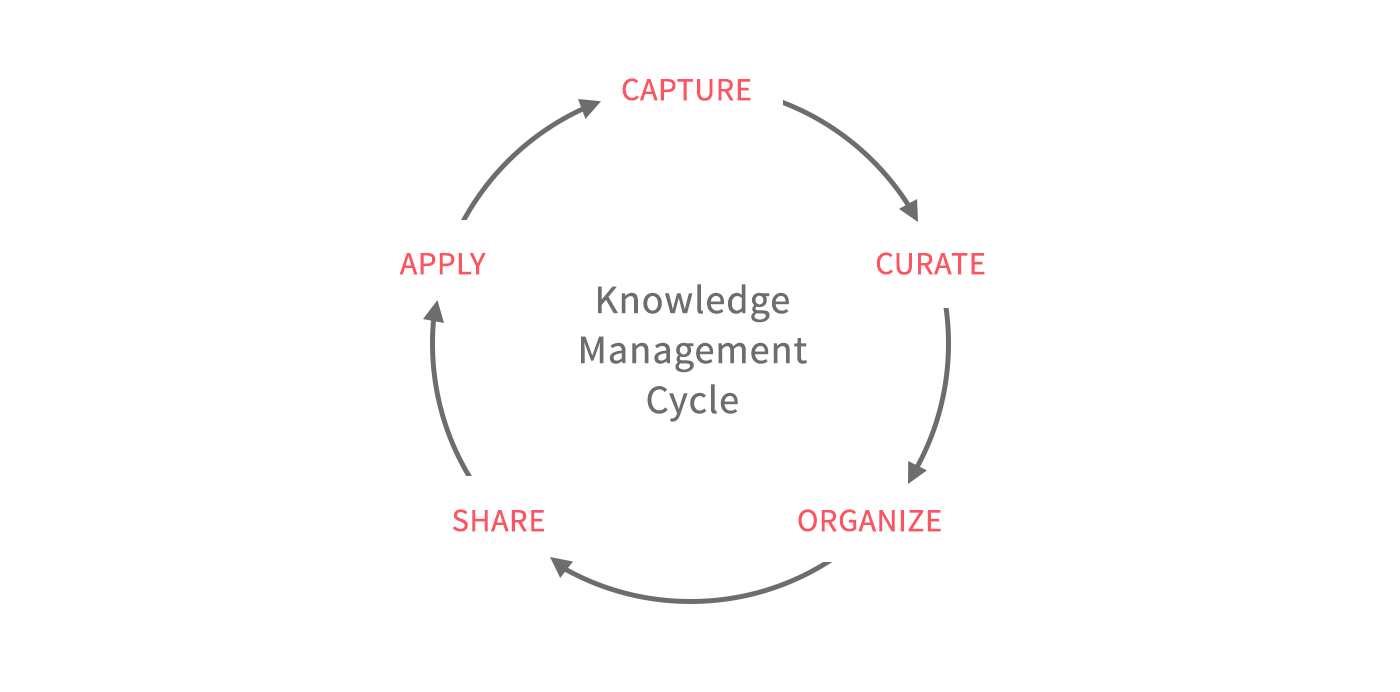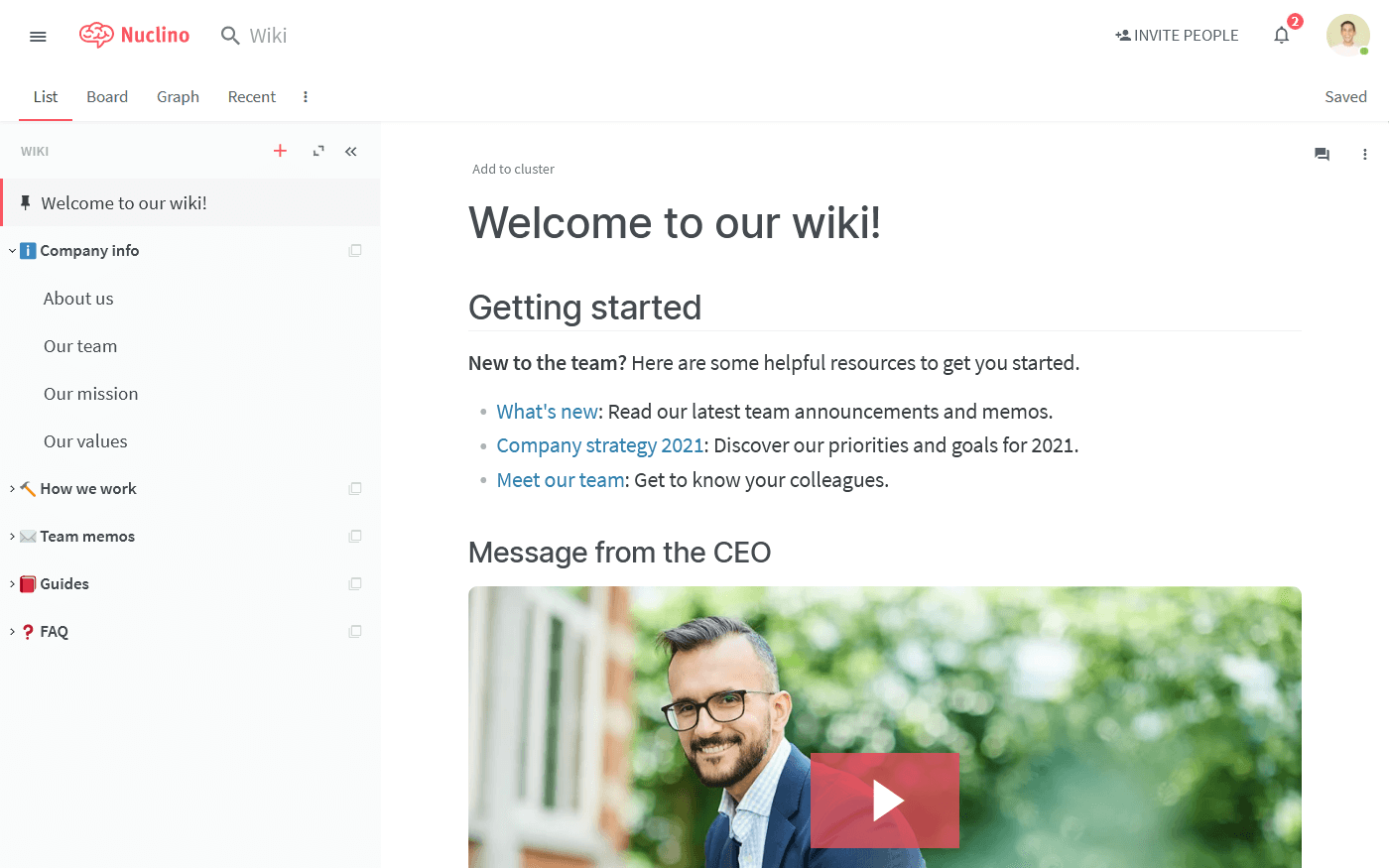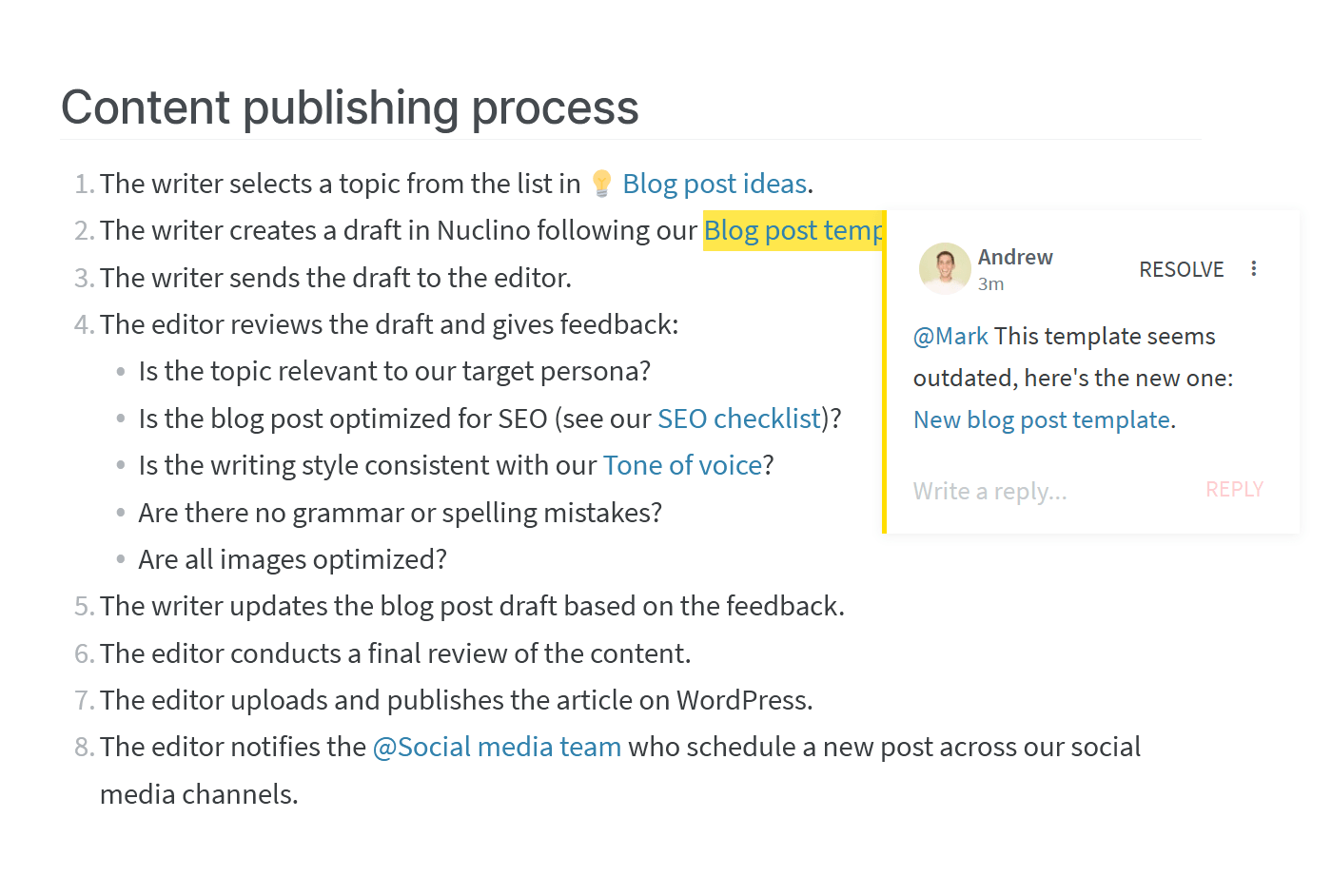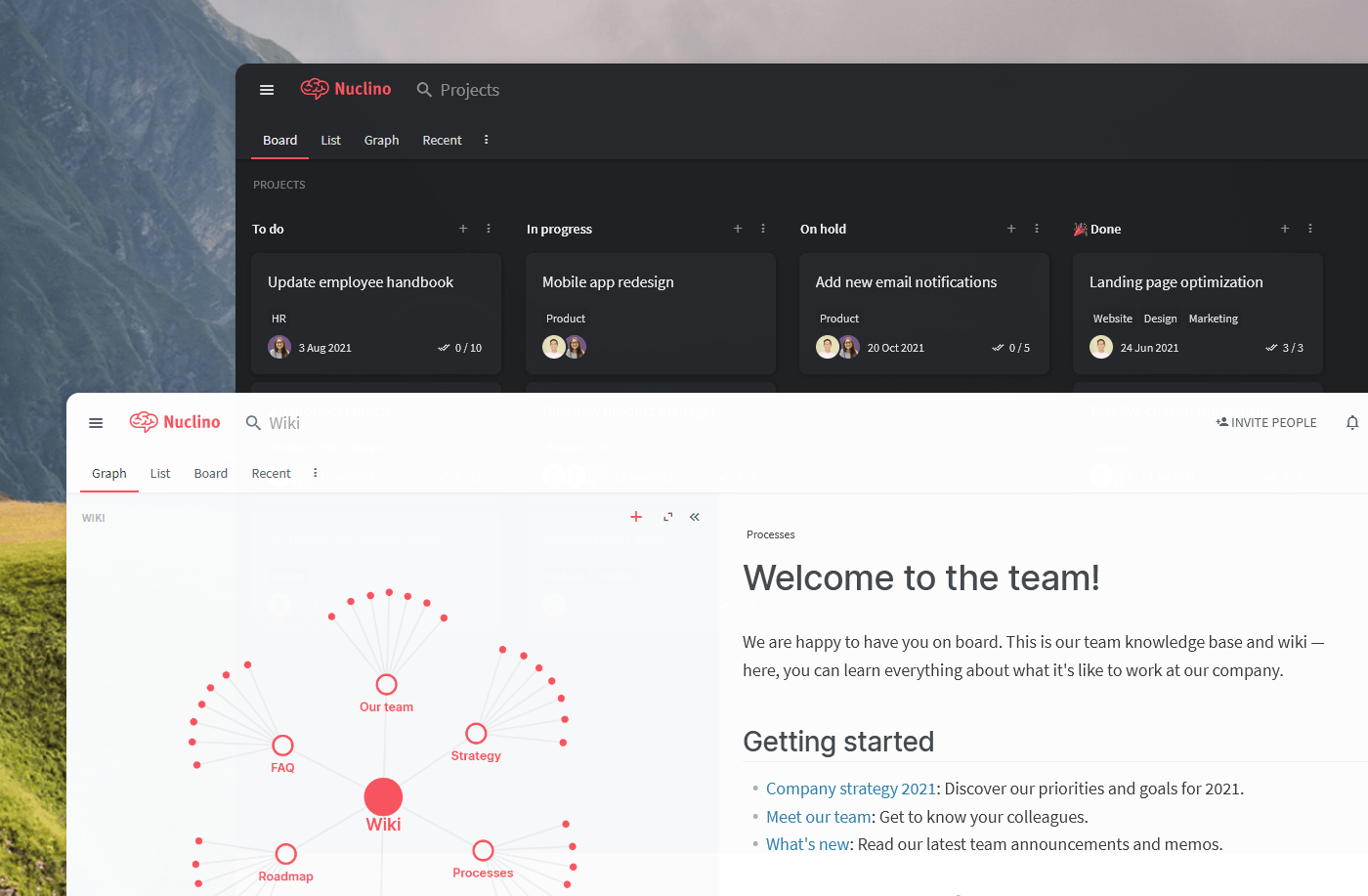The Complete Guide to Knowledge Management
Learn how to build a culture of transparency and knowledge sharing in your organization.
Studies suggest that Fortune 500 companies lose a combined $31.5 billion per year from failing to manage knowledge effectively. Employees repeat each other's mistakes, try to "reinvent the wheel" when solving problems, and waste hours every week searching for the information they need.
Knowledge is every organization's most valuable asset, and it's not enough to simply accumulate it – it needs to be carefully managed. But what does knowledge management actually entail?
- What is knowledge management (KM)?
- Benefits of knowledge management
- Knowledge management best practices
What is knowledge management (KM)?
Knowledge management (KM) is the process of capturing, curating, organizing, sharing, and effectively applying the knowledge and information of an organization. It helps companies achieve their organizational objectives by making the best use of knowledge.

Simply put, KM is about getting the right information to the right person at the right time.
The ultimate goal of knowledge management as a discipline is to enable a culture of continuous learning and enable knowledge to flow freely throughout an organization. To make that possible, KM focuses on the following tasks:
Identifying where and in what form the knowledge exists;
Assessing, refining, and documenting that knowledge;
Ensuring the captured knowledge is accessible to people when they need it;
Promoting a culture of knowledge sharing and learning;
Finding ways to continuously generate new relevant knowledge.
Knowledge management is not a one-time project. Successfully accomplishing these goals requires continuous effort – as well as appropriate workflows and tools.
What is a knowledge management system (KMS)?
A knowledge management system (KMS), is any platform you use for storing, organizing, and sharing knowledge. It is also often referred to as a knowledge sharing platform. There are two main types of knowledge management systems:
Internal KMS: internal wikis, corporate wikis, intranet portals, internal documentation platforms, and internal knowledge bases.
External KMS: customer knowledge bases, external documentation platforms, and help centers.
If your company doesn't have an internal knowledge management system yet, you can easily create one in Nuclino. While you can use Nuclino exclusively as an internal KMS, it's a unified workspace where you can also manage projects, onboard new employees, take meeting minutes, collaborate on documents, and more. It works like a collective brain, allowing you to bring all your team's work together in one place and collaborate without the chaos of files and folders, context switching, or silos.

Company wiki platform (Nuclino)
Benefits of knowledge management
There are many good reasons to invest in organizational knowledge management:
KM helps streamline and speed up new employee onboarding.
It helps prevent knowledge loss when experienced employees leave.
Employees waste less time looking for information and are better equipped to do their jobs.
Mistakes are less likely to be repeated.
The team can make faster and more informed decisions.
Employees can learn from each other and accumulate best practices.
All of this helps the organization to foster innovation, boost employee productivity, and operate more efficiently overall.
Types of knowledge
To better understand the process of knowledge management, it is helpful to consider the different types of knowledge that every organization produces.
There are three main types of knowledge:
Explicit knowledge. Explicit knowledge is the information that can be codified, such as how to book a meeting room. This type of knowledge can be readily understood and shared with others, and is generally easier to manage than other types. Common examples of codified explicit knowledge include employee handbooks, standard operating procedures, HR policies, and so on.
Implicit knowledge. Implicit knowledge is the information that can be codified, but hasn't been. It's the unspoken, tribal knowledge that can be taught and shared, but isn't formally documented. Instead, it's embedded in existing processes.
Tacit knowledge. Tacit knowledge stems from experience and intuition – it's a skill rather than simply information. It's often hard to articulate, document, and communicate to others. This includes knowledge of foreign languages, copywriting, design skills, and so on. Managing this type of knowledge tends to be very challenging.
Let's look at a practical example:
The customer support team at your company has an internal knowledge base in which they have documented the process of correctly responding to customer requests. This includes the steps they need to take, the canned responses they can use, the time in which they should resolve tickets, and so on. This would be an example of explicit knowledge.
The team knows how to handle unique and unexpected cases for which there is no documented canned response. They have developed certain "know-how" about their work, allowing them to improvise without relying on formally documented knowledge. This is an example of implicit knowledge.
Experienced members of the team know how to skillfully handle complaints from upset customers. They can communicate with empathy and know how to diffuse conflicts. This is an example of tacit knowledge.
These different types of knowledge can't always be effectively managed with the same approach.
Knowledge management best practices
Whether you are looking to optimize your organization's existing processes or are starting with a blank slate, there are a number of knowledge management strategies and best practices that can make your job easier:
Create a central knowledge repository. Knowledge naturally scatters across email, Google Docs, folders, support tickets, Slack channels, and so on. The more dispersed it becomes, the harder it becomes to access it and find the information you need. Instead, all knowledge can be consolidated in one place – your team's single source of truth. This can be your company wiki, intranet portal, or internal knowledge base.
Lead by example. It may take some time for everyone to develop the right habits, but your leadership team can go a long way in setting a positive example. Get the ball rolling by actively expanding and updating your knowledge base. If someone asks a question that has been documented, show them where to look it up.
Embrace asynchronous communication. Knowledge silos exist because in most companies information is mainly exchanged in meetings, without getting documented. Communicating asynchronously through thoughtful long-form write-ups automatically creates documentation and adds to your knowledge base.
Encourage collaboration and crowdsourcing. Knowledge management can't be effective if it's only done from the top down – it needs to be a team effort. Make sure that the knowledge sharing tool you choose allows your employees and colleagues to easily contribute content and exchange feedback.

Example of feedback loops in a knowledge base (Nuclino)
Finding the right knowledge sharing tools is only one part of a knowledge management strategy. The most challenging task is changing the organizational culture, developing the needed processes, and forming the right habits.
It will not happen overnight, but with the right approach it can yield numerous long-term benefits and help your team stay on the same page, collaborate, and make better, faster decisions.
Nuclino: Your team's collective brain

Nuclino brings all your team's knowledge, docs, and projects together in one place. It's a modern, simple, and blazingly fast way to collaborate, without the chaos of files and folders, context switching, or silos.
Create a central knowledge base and give your team a single source of truth.
Collaborate in real time or asynchronously and spend less time in meetings.
Manage and document your projects in one place without losing context.
Organize, sort, and filter all kinds of data with ease.
Integrate the tools you love, like Slack, Google Drive, Figma, Lucidchart, and more.
Ready to get started?
